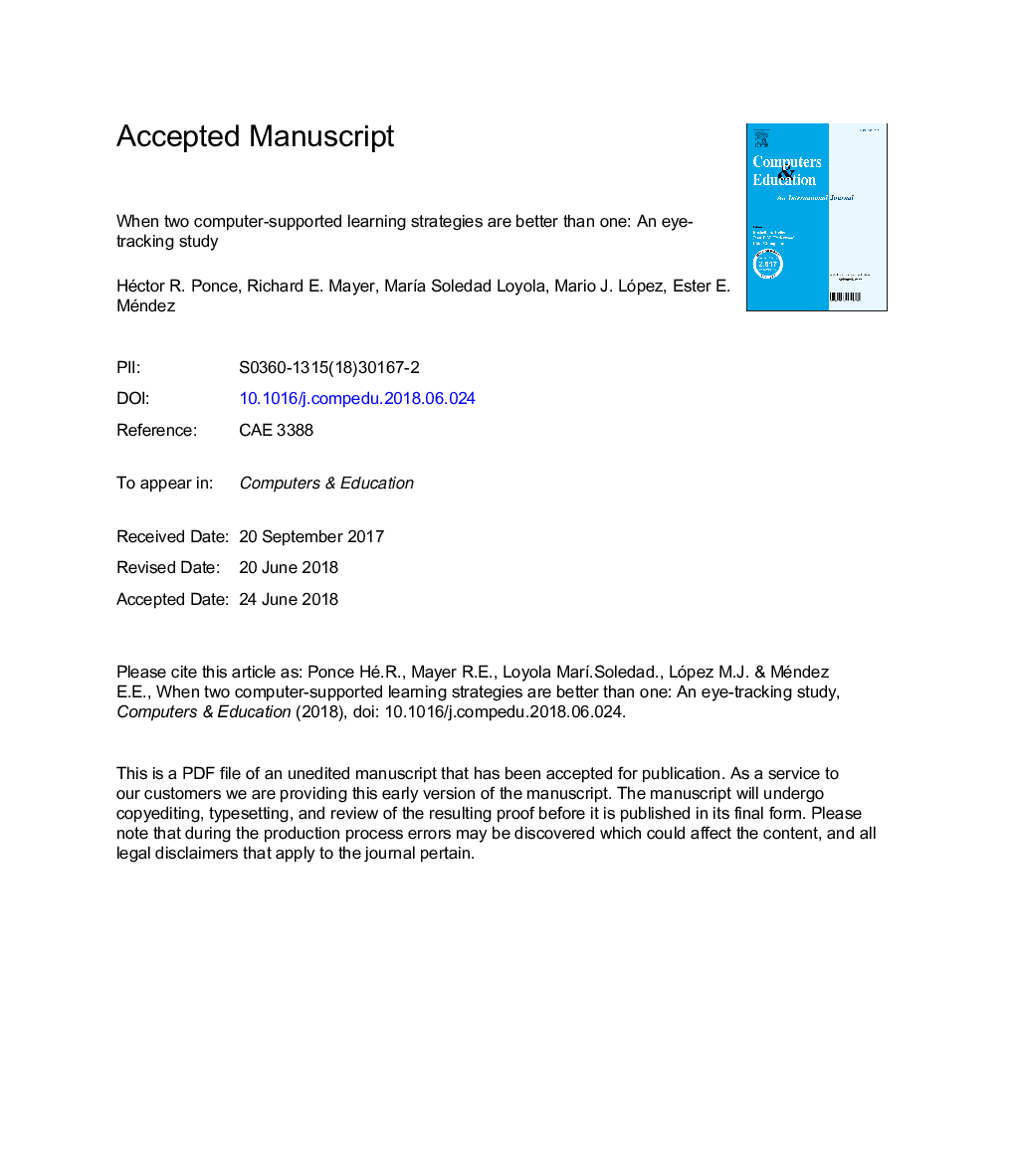| Article ID | Journal | Published Year | Pages | File Type |
|---|---|---|---|---|
| 6834645 | Computers & Education | 2018 | 49 Pages |
Abstract
The aim of this study is to examine the effects of using one or two computer-supported learning strategies on learning processes (as measured by integrative eye movements through eye-tracking methodology) and learning outcome (as measured by memory and comprehension tests). Sixth-grade students selected from four schools located in Santiago, Chile read a two-paragraph text on a computer screen and were asked either to read it (read-only group), highlight text as they read (highlighting group), type notes from the text into a textbox as they read (notetaking group), fill in an interactive graphic organizer (graphic organizer group), highlight first and then take notes from the text (highlighting + notetaking group) or highlight first and then fill in an interactive graphic organizer (highlighting + graphic organizer group). The graphic organizer group, highlighting + graphic organizer group, and highlighting + notetaking group each made significantly more integrative eye movements between the two paragraphs during learning (indicating better learning processes) and produced higher comprehension test scores (indicating better learning outcomes) as compared to the read-only group, whereas the highlighting group and notetaking group did not. Results are consistent with the idea that filling in graphic organizers is a generative learning strategy, whereas highlighting and typing notes into a textbox are not generative learning strategies. Similarly using two learning strategies together (notetaking and highlighting) leads to generative learning even though using either one of those strategies alone does not, so in this case two learning strategies are better than one.
Related Topics
Social Sciences and Humanities
Social Sciences
Education
Authors
Héctor R. Ponce, Richard E. Mayer, MarÃa Soledad Loyola, Mario J. López, Ester E. Méndez,
